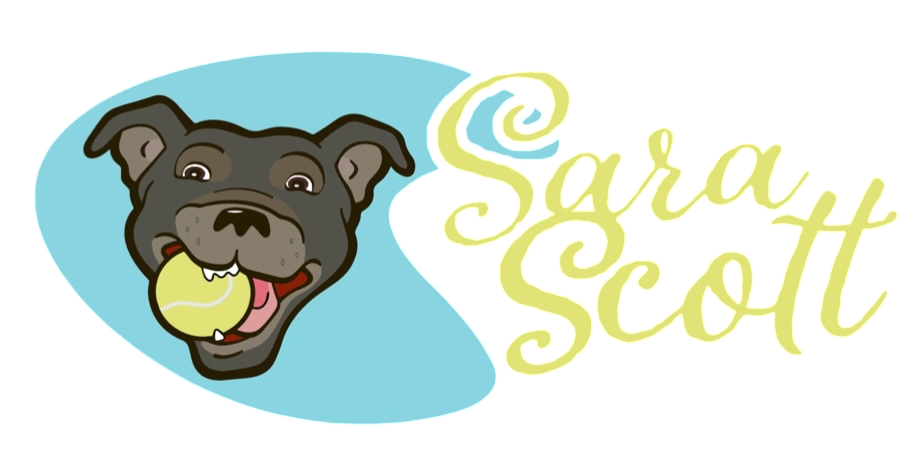The Ultimate Guide to Understanding Dog Reactivity from A to Z
- Sara Scott

- Jan 11, 2024
- 3 min read
If your pup morphs into Cujo at the sight of skateboards or strange dogs, you’re not alone. Reactivity remains an infamous challenge, conjuring nightmares of walks from hell with owners pleading into deaf ears. Yet seeing it as a character flaw rather than involuntary reflex does our best friends a disservice. Through understanding roots, recognizing signals, and transforming perspectives, we can rewrite the narrative from meltdowns to breakthroughs.

What Drives Reactivity?
Reactivity arises when dogs react intensely to specific triggers in their environment due to underlying emotions like fear, frustration, overstimulation, or conflicting instincts. These triggers run the gamut from unfamiliar people and dogs to bikes, loud noises, or new surroundings.
Reactivity frequently surfaces when dogs feel constrained on leash, helpless to establish control through age-old body language cues. Frustration boils over into lunging as pent up energy seeks any outlet. Even curiosity about other dogs who appear fun and interesting can spark overexcitement at the inability to rush over and say hello! Fear also plays a pivotal role, with alarming stimuli triggering self-protective reactions. Ultimately then, reactivity arises as a dog attempts to urgently cope with intensely felt emotions they are ill-equipped to adaptively regulate when confronted by situations exceeding their current tolerance thresholds.
Warning Signs and Signals
Tune into your dog’s unique reactive language. Subtle signals telegraph rising distress before explosions erupt. Ears swivel back, mouths tighten, tails lower as they scan the environment hypervigilantly. Spotting these rising thermometers of tension early allows us to course correct, alleviating pressures before the tipping point.
Conversely, missing escalations risks emotional overload. Reactive attacks flood dog brains with stress hormones. Aftershocks rattle nervous systems for hours, even days. So catching whispers empowers preventing screams down the line.
Strategies For Success
The most effective programs first defuse reactivity landmines altogether through management planning identifying individual danger zones. Cross the street, move behind vehicles, or quickly get distance from triggers. Preventing reactions prevents rehearsing reactions, accelerating progress. For more details on managment plans for leash activity click here.
It’s a dance - decreasing distance between triggers and dogs only as comfort permits, coded through body language. Once effective management is in play, the stage is set for counter conditioning exercises to create long term behavior change.
But lifestyle adaptations prove foundational. Carve peaceful daily reprieves allowing dogs to just be dogs, minus continual stimulus bombardment. Seek quiet parks, off-hour adventures, even rural stays rebooting nervous systems. Decompression time sustains progress.
The Takeaway
Reactivity seems unsolvable until we reframe reactions as reflexes - from embarrassing character flaw to involuntary fight/flight/freeze response. They deserve empathy as victims, not offenders.
Progress unfolds through compassionately addressing root insecurities, not ultimatums. And counterintuitively, avoiding rather than attacking perceived threats opens space for rebuilding emotional cores. Arm yourself with knowledge, surely anything is possible when we make understanding each other the priority.
Still Struggling With Reactivity?
If your walks still feel like navigating a minefield of unpredictable explosions, customized reactivity training can help transform dogs pulsing with potential despite current barriers. I offer guaranteed game plans tailored to your dog’s unique triggers and tolerance thresholds using evidence-based behavior protocols backed by over 25 years hands-on experience. Whether the struggle stems from leash frustration, fear, overexcitement or more, our blueprint combines management, motivation and lifestyle adaptations for sustainable security.
You deserve lasting loose leash sanity without endless unpredictability or embarrassment. My personal support provides actionable solutions, compassionate encouragement, judgment-free troubleshooting, and long-term victory beyond quick fixes. Let’s chat about the possibility of breakthroughs so walks can feel like freedom again, not utter chaos. New beginnings are just one committed step away – you’ve got this! Learn more.




Comments